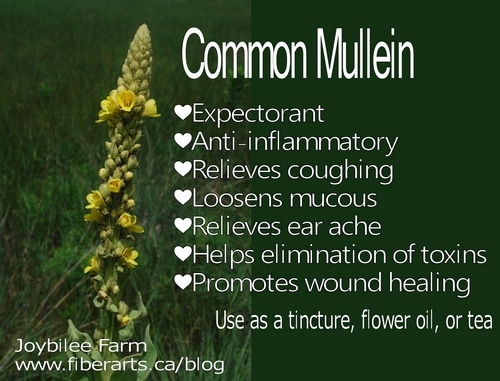What do you get when you combine a shepherd’s hook meant for
hanging plants with a short length of shiny stovepipe, a one-gallon plastic
pot, a small metal hose clamp and a foot-long piece of wire?
Thanks to my clever husband, the answer is an
inexpensive, effective do-it-yourself way to stop squirrels from eating food
meant for birds.
 |
| My husband's DIY squirrel baffle |
Birdfeeders entice a wide range of birds to the yard, but
unfortunately, they also attract seed-devouring squirrels. Unlike birds that
fly in, eat a few seeds, then fly away, squirrels are greedy. Once they
discover a well-stocked feeder, they settle in for the long haul, consuming
seed at an alarming rate.
 |
| A squirrel making himself at home in a feeder meant for the birds |
At first, their presence can be entertaining. These one-pound
relatives to rats and rabbits are bold, agile and skillful acrobats. To reach a
feeder, they’ll climb high and leap long distances. Eastern gray squirrels can
jump about four feet up from the ground and about nine feet horizontally.
They’re right at home on tree branches, roofs and exterior walls and almost
equally adept on wires and ropes.
Over the years, I’ve tried my best to outwit the nimble
nibblers. I’ve laced birdseed with a red pepper compound advertised to repel
rodents but not bother birds. It became ineffective after the first rain.
Hanging shiny objects by the feeders didn’t work nor did suspending the feeding
stations from nylon fishing line in the hope that the strong but clear filament
would be too thin for them to climb. A smart squirrel thwarted that plan by
simply chewing through the nylon, which caused the feeder to drop, break and
spew seed all over the ground. A squirrel smorgasbord ensued.
I’ve purchased my share of feeders advertised as
“squirrel-proof.” Unfortunately, the main thing each proved was how willing I
was to exchange money for the hope of a successful design.
.JPG) |
| One of many 'squirrel proof' feeders that didn't work. In this one, the squirrel bypassed the wire to chew through the plastic for easy access to the seed inside. |
Enter my husband and our extensive junk pile.
“I wish there was a way to keep the squirrels out of the
feeder,” I muttered after watching a squirrel conquer yet another supposed
squirrel-deterring purchase.
I went off to do errands in town and when I came back, Ralph
had something to show me. After perusing his treasured stash of
too-good-to-throw-out-we-might-need-it-someday items, he had gathered the tools
to overcome my squirrel problem once and for all.
 |
| One small section of my husband's treasured junk pile |
“I can make a baffle out of the stovepipe with an inverted
pot inside that should keep the squirrels away,” he said. I’m ashamed to say I
doubted him.
My birdfeeder hangs from a shepherd’s hook. In less than
fifteen minutes, my inventive spouse had secured a metal hose clamp onto the
pole and slipped a 17-inch-long section of 8-inch diameter stovepipe over the
shepherd’s hook and just below the clamp. He then did the same thing with an
upside-down black plastic one-gallon flowerpot. The flowerpot fit loosely
within the larger diameter metal pipe. He wove the wire through holes in
the pipe and pot, twisting them above the clamp around the pole. When done, the
shiny homemade metal baffle hung three-feet above the ground and about four
inches below the birdfeeder.
.JPG) |
| Four inexpensive items - a clamp, wire, plastic pot and stovepipe section - made a simple fix to a perplexing problem |
Ralph made the baffle in the afternoon. I refilled the
feeder and within a few hours, a squirrel was already checking it out.
 |
| Checking things out...something's different...but what? |
Instead of climbing the pole as it usually did, the squirrel
eyed it curiously. Something was different, but what? The curious critter
jumped onto a nearby platform and arched toward the feeder but didn’t leap onto
it.
 |
| "Maybe if I lean in and look just a little closer I'll figure out how to reach the feeder... " |
Instead, it jumped back to the ground, stood on its hind legs and turned
toward the house where it saw us watching through the window. With its cute
little furry face, it gazed longingly at the feeder before looking at us
beseechingly. What it didn’t do, however, was figure out how to bypass the
baffle to regain a place at the feeding station.
 |
| Thanks to my clever husband, birds like this chipping sparrow can now enjoy birdseed without interference from squirrels |
The definition of baffle is to totally bewilder or perplex.
I’m sure the little gray freeloader that had been enjoying sunflower seeds at
our expense was indeed baffled by my husband’s inventive creation, but I had no
idea that I, too, would feel so perplexed. How could I have let such a simple
solution elude me for so many years? Most importantly, why do I continually
criticize Ralph’s sprawling junk pile when the materials it contains enable him
to fix so many problems?
I have a squirrelly suspicion some questions are best left
unanswered.



.JPG)
.JPG)
.JPG)
.JPG)
.JPG)
.JPG)


.JPG)

.JPG)
.JPG)

.JPG)
.JPG)
.JPG)



.JPG)
.JPG)

.JPG)




.JPG)
.JPG)


.JPG)

.JPG)


